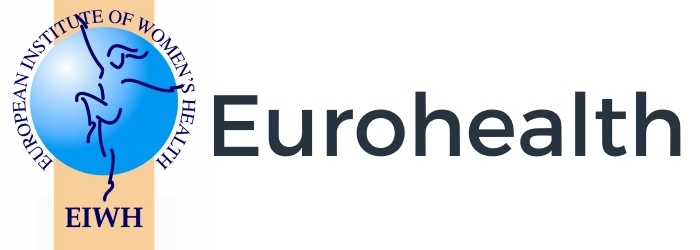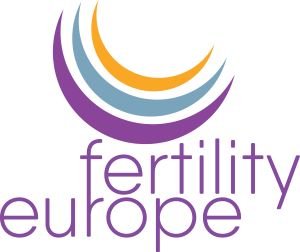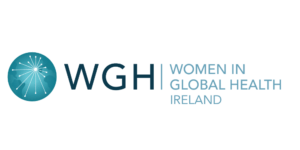
European Institute of Women’s Health, clg
EU Manifesto for Women’s Health
2024
To view the PDF, please click here
Introduction
The promotion of sex and gender equity has been a long standing theme in the philosophy and operations of the EU (1) and in line with Articles 160 and 168 of the Treaty on the Functioning of the European Union and the UN Sustainable Development Goals (SDGs). It
has been over 60 years since the Treaty of Rome, where gender equality was enshrined into EU law and yet no country has succeeded in reaching gender equality: this is also reflected in healthcare. The European Institute of Women’s Health (EIWH) calls on the EU to commit to the reduction of health inequalities and provide equitable health for all women, through the provision of an EU Strategy for Women’s Health.
Sex and gender impact the health and wellbeing of individuals. They can affect the risk of health problems; the efficacy and risk of adverse reactions to drugs and treatments; the metabolization of medications due to differences in physiological processes; health seeking behaviours; and interactions with health services and healthcare professionals, among other important health related factors. Women’s pain levels are more likely to be under estimated and they experience longer diagnostic delays. Women are notoriously under represented in clinical trials and as a result, they have a higher risk of experiencing an adverse reaction to a drug compared to men. All research, monitoring and evaluation data must be disaggregated by sex and gender to take into account these differences.
Many conditions specific to women lack sufficient research, attention and prioritisation, and have not received adequate funding and resources. Examples of these include polycystic ovary syndrome, which does not have a standardised treatment, and women with endometriosis experience a diagnostic delay of 7.4 years on average, despite this condition affecting 1 in 10 women. Many issues affecting girls and women across the EU continue to carry stigma and taboo in 2023 such as menopause and dysmenorrhea (painful menstruation).
The social determinants of health as well as the commercial determinants of health affect access to healthcare. Unequal opportunities, lack of decision making power, unfair work divisions and violence against women all impact health.
Women’s health is an unfinished agenda with large gaps and unmet needs persisting. Sex and gender are not systematically integrated into policy, programs, education, training, research, data collection and analysis. Existing policies, for example in the inclusion of participants in clinical trials who are representative of the population likely to use the drug or treatment, are not fully enforced. Women are the main users of health care and the main providers of that care. A comprehensive and supportive approach, must be taken by policy makers at EU and national level to empower and support women to have an active and healthy life in order to reduce inequalities.
|
Women’s Health Facts and Figures
|
This list is not exhaustive. Women’s health is a cross cutting issue that plays into all policies and issues across the sectors of society. This highlights the need for a comprehensive and inclusive EU Strategy for Women’s Health with clearly defined targets, monitoring and evaluation.
Time to Act
Concerted action must be taken to improve women’s health in Europe by integrating sex and gender in research, disaggregating data by sex, gender and age, and translating sex and gender differences into regulatory and healthcare practice. Gender and health must be included in all policies as socioeconomic, political, educational, transport, environment, cultural and ethnicity differences impact patterns of behaviour and access to resources for women and their families. The EU must invest in a life course approach to health promotion and disease prevention at critical points from pre conception to childhood through older age. Equity of opportunities must be ensured for women, men and gender diverse people in all policies.
Equity must underpin health and healthcare. The current model predominately employs a “one size fits all” approach, which leaves many at a disadvantage. Society must invest in women’s health and wellbeing in order to combat inequities and lay a strong foundation for the health of future generations. The EIWH is asking the EU Commission to develop and the EU Parliament to support an EU Strategy for Women’s Health.
To effectively work towards an EU Strategy for Women’s Health, the EIWH will advocate for a Women’s Health Interest Group in the European Parliament to focus on women’s health issues and drive gender equity in health agenda in Europe.
EU Manifesto for Women’s Health 2024
The EIWH calls for an EU Strategy on Women’s Health that will incorporate the following:
Tackle the pay and pension gap
- The Equal Treatment Directive (2006/54/EC), the Equal Pay Recommendation (2014/124/EU) and European Pact for Gender Equality must be evaluated and enforced.
International Collaboration on Women’s Health
- Collaboration between international organisations such as the WHO and the EU with civil society organisations, non governmental organisations, research institutions and communities to address the issue of women’s health.
- Call for an EU Strategy on Women’s Health.
Implement the Work Life Balance Directive
- The Work Life Balance Directive for Parents and Carers (2017) must be implemented in order to address women’s under representation in the labour market as well as to support women as patients, employees and vital caregivers.
Support the implementation of the Clinical Trials Regulation (536/2014)
- The Clinical Trials Regulation must be implemented, monitored and evaluated in order to combat the systematic underrepresentation of women in clinical trials. At national level, ethics committees must develop guidelines to ensure the inclusion and consideration of women.
- Include access to innovative technology and quality treatment and care and Health Technology Assessment (HTA) as part of the EU Pharma Strategy.
Establish an EU coalition for sex and gender in health professional education
- A European coalition for the integration of sex and gender into healthcare professional education should be established to exchange best practice and drive the agenda across EU Member States with the first workstream focusing on immunisation.
Advocate for and implement European standards of maternal care
- Member States should implement high quality maternal services that comply with evidence based guidelines for the provision of high quality clinical care, including the provision of antenatal, intrapartum and postpartum care, induction of labour and caesarean section. The EU should fund a European wide initiative to determine and share best practice.
Support a pilot programme to create a multi-stakeholder network tackling obesity
- A pilot programme should bring together diverse stakeholders to contribute to the awareness of obesity, which includes maternal obesity and support better nutrition for women across the life course.
Promote the inclusion of gender in the European Digital Agenda for the Decade 2020 – 2030
- Promote digital health literacy for all across the life course, including vulnerable groups. Ensure digital technologies do not exacerbate existing gender inequities
- Increase women’s involvement in STEM. Tailored programming needs to be implemented to encourage and support women in Science, Technology, Engineering and Mathematics (STEM).
- Remove financial barriers to accessing public health information via digital services. Provide accessible telemedicine services for all.
- Consider risks and barriers for women accessing digital services.
Prioritise women’s health in all funding
- Women’s health must be a theme in the EU4Health Programme. Member States must make women’s health a priority in the EU Semester and the multiannual financial frameworks.
- More resources and funding must be targeted towards women’s health. This funding should be secure and sustainable.
Research
- Research on sex and gender in health must be explicitly funded at EU level. Sex and gender should be included as a priority in the Horizon Europe Research Programmes, Innovative Health Initiative, including funding for digital health and e health programmes.
- Ensure that data is sex, gender and age disaggregated.
- All future EU Research programmes, including Horizon Europe and Horizon 2020 Research Programme, must require sex, gender and age specific data disaggregation as a funding criterion. Data disaggregation by sex, gender and age must be referenced in the guide for applicants, the proposal application form and the evaluation guide.
Evaluate the state of play for women’s health
- The European Parliament should commission an own initiative report on women’s health in the EU to determine what progress has been achieved, what inequities persist and how to move forward together to improve the health of women and consequently, all those in Europe with a chronic disease.
Promote a positive approach to ageing and health.
- In light of an increasingly ageing Europe, a multidisciplinary Network on Midlife and Older Women should be established to bring together researchers, policymakers, patients, caregivers, healthcare professionals and other relevant stakeholders.
Promote the Recommendations in the EU Care Strategy 2022
- Explore new sectoral social dialogue for social services at the EU level.
- Call on EU member states to invest in and improve early childhood education and care. Proposal for a Council Recommendation on long term care, are important elements in redistributing and reducing unpaid care work.
- Improve the quality, accessibility, and affordability of both early childhood education and care, and long term care.
- Addressing gender discrimination in rewarding paid work is crucial to close the gender care and pay gap.
Protect
- Support an EU system on the safe use of medicines during pregnancy and lactation. A publicly funded comprehensive European Pharmacovigilance system should be established at European level to collect data on the safe use of medicines during pregnancy and lactation
- Empower individuals trough increased digital access and control of their electronic personal health data, at national level and EU-wide.
- The proposed EU Mental Health Strategy should acknowledge the role of women as carers, both formal and informal, and provide specific objectives for this group.
- Broaden the translation services for healthcare and policy materials to further the inclusion of migrant and ethnic minority groups.
- Increase access to healthcare for vulnerable, minority and marginalised populations.
Promote implementation of the EU Beating Cancer Plan
- Combat women’s cancer by improving access to treatment and care. A European Alliance on Women’s Cancer should be established to better prevent and combat women’s cancers.
- Ensure inclusion of vulnerable groups in the review of the Council Recommendations on Cancer Screening for those with cancer, including impact on mental health.
- Support of HPV vaccine for your boys and girls to prevent cervical and other HPV related cancers.
Support a gender transformative workforce recognising women as the cornerstone in driving health for all
- Investing in female health workers to mitigate the health workforce shortages.
- Mandating gender parity at senior management levels of health organisations and in their government bodies.
Our partners
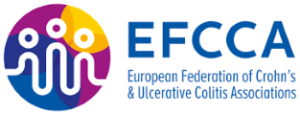 |
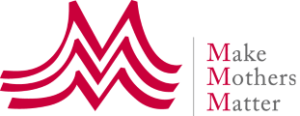 |
|
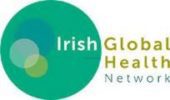 |
 |
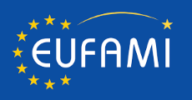 |
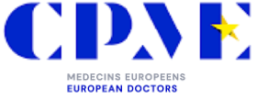 |
 |
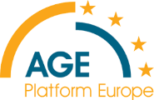 |
 |
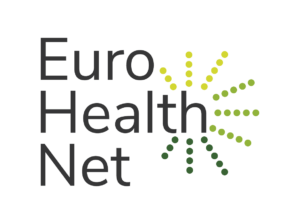 |
 |
 |
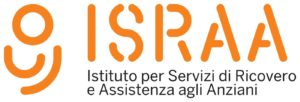 |
 |
|
|
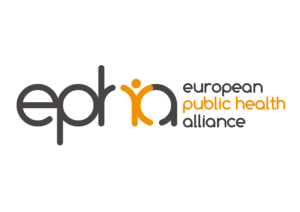 |
|
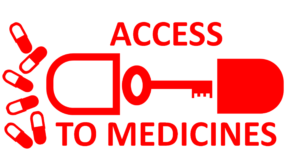 |
|
|
|
|
|
References
- European Institute of Women’s Health. 2000. Gender Equity in Public Health in Europe. https://eurohealth.ie/reports [Accessed 12 September 2018].
- European Institute for Gender Equality. 2017. Economic case for gender equality in the EU. https://eige.europa.eu/gender-mainstreaming/policy-areas/economic-and-financial-affairs/economic-benefits-gender-equality [Accessed 30 August 2018].
- EuroHealthNet. 2015. What do EU Member States need from the EU health policy? https://eurohealthnet.eu/sites/eurohealthnet.eu/files/2015_04_17_Letter%20for%20informal%20EPSCO%20Council_final.pdf [Accessed 1 September 2018].
- Eurostat. 2022. Gender pension gap by age group – EU-SILC survey. https://data.europa.eu/data/datasets/puwyvpxxy9d75nlni1a?locale=en [Accessed 21 November 2022].
- Eurostat. 2022. Closing the gender pension gap? https://ec.europa.eu/eurostat/web/products-eurostat-news/-/ddn-20210203-1 [Accessed 21 November 2022]
- Eurostat. Majority of health jobs held by women 2021 [Available from: https://ec.europa.eu/eurostat/web/products-eurostat-news/-/edn-20210308-1.
- Mathieu Boniol, Michelle McIsaac, Lihui Xu, Tana Wuliji, Khassoum Diallo, and Jim Campbell, Gender Equity in the Health Workforce: Analysis of 104 Countries (World Health Organization, 2019).
- World Health Organization. The gender pay gap in the health and care sector a global analysis in the time of COVID-19. 2022 https://www.who.int/publications/i/item/9789240052895
- European Commission. 2018. Informal Care in Europe. http://ec.europa.eu/social/BlobServlet?docId=19681&langId=en [Accessed 30 August 2018].
- Rademaker, M., 2001. Do women have more adverse drug reactions?. American journal of clinical dermatology, 2(6), pp.349-351, https://www.ncbi.nlm.nih.gov/pubmed/11770389 [Accessed 5 June 2018].
- WHO Regional Davaki, K. 2019. Access to maternal health and midwifery for vulnerable groups in the EU. Available at https://www.europarl.europa.eu/RegData/etudes/STUD/2019/608874/IPOL_STU(2019)608874_EN.pdf [Accessed 21 November 2022].
- WHO Europe. Health at key stages of life – the life-course approach to public health. http://www.euro.who.int/data/assets/pdf_file/0019/140671/CorpBrochure_lifecourse_approach.pdf [Accessed 1 September 2018].
- Diguisto, C., Saucedo, M., Kallianidis, A., Bloemenkamp, K., Bødker, B., Buoncristiano, M., Donati, S., Gissler, M., Johansen, M., Knight, M., Korbel, M., Kristufkova, A., Nyflot, L.T., Deneux-Tharaux, C., 2022. Maternal mortality in eight European countries with enhanced surveillance systems: descriptive population based study. BMJ e070621.. https://doi.org/10.1136/bmj-2022-070621
- Abdalla S, Cronin F, Daly L, Drummond A, Fitzpatrick P, Frazier K, et al. All Ireland Traveller Health Study. Dublin: University College Dublin; 2010.
- Kristel Van Calsteren, Ksenija Gersak, Hildrun Sundseth, Ingrid Klingmann, Lode Dewulf, André Van Assche, Tahir Mahmood. 2015. Position Statement from the European Board and College of Obstetrics & Gynaecology (EBCOG): The use of medicines during pregnancy—Call for Action. https://www.ebcog.org/single-post/2016/05/09/position-paper-medicines-pregnancy.
- Stock, S. J., & Norman, J. E. (2019). Medicines in pregnancy. F1000Research, 8, F1000 Faculty Rev-911. https://doi.org/10.12688/f1000research.17535.1
- FRA, 2014. Violence against women: an EU-wide survey. Main results report. Available from: https://fra.europa.eu/en/publication/2014/violence-against-women-eu-wide-survey-main-results-report
- The European Commission. 2020. Breast cancer burden in EU-27. Available from https://ecis.jrc.ec.europa.eu/pdf/Breast_cancer_factsheet-Oct_2020.pdf [Accessed 21 November 2022]
-
WHO. 2022. The cancer we can eliminate – WHO/Europe urges Member States to consign cervical cancer to history. Available from: https://www.who.int/europe/news/item/12-09-2022-the-cancer-we-can-eliminate—who-europe-urges-member-states-to-consign-cervical-cancer-to-history/ [Accessed 21 November 2022]
-
WHO Regional Office for Europe. 2020. The WHO European health equity status report initiative: understanding the drivers of health equity: the power of political participation. Retrieved from https://apps.who.int/iris/bitstream/handle/10665/337952/WHO-EURO-2020-1697-41448-56504-eng.pdf
-
European Institute for Gender Equality. 2021, EIGE-2021 Gender Equality Index 2021 Report: Health. Available from https://eige.europa.eu/publications/gender-equality-index-2021-report [Accessed 22 November 22]
-
Eurostat. 2017. Healthy life years statistics. http://ec.europa.eu/eurostat/statistics-explained/index.php/Healthy_life_years_statistics [Accessed 22 May 2018].
-
DeSa, S., Gebremeskel, A.T., Omonaiye, O. et al. Barriers and facilitators to access mental health services among refugee women in high-income countries: a systematic review. Syst Rev 11, 62 (2022). https://doi.org/10.1186/s13643-022-01936-1
-
Wittchen, H. U., Jacobi, F., Rehm, J., Gustavsson, A., Svensson, M., Jönsson, B., Steinhausen, H. C. (2011). The size and burden of mental disorders and other disorders of the brain in Europe 2010. European Neuropsychopharmacology, 21(9), 655-679. doi:10.1016/j.euroneuro.2011.07.01.
-
European Institute of Women’s Health. 2018. Right from the Start: Resetting the Agenda in Women’s Health Conference Executive Report. https://eurohealth.ie/report-21st-anniversary-expert-conference/[Accessed 5 June 2018].
-
World Health Organization. 2022. Vaccines and Immunization. https://www.who.int/health-topics/vaccines-and-immunization#tab=tab_1 [Accessed 21 November 2022].
-
Alison McFadden, Lindsay Siebelt, Anna Gavine, Karl Atkin, Kerry Bell, Nicola Innes, Helen Jones, Cath Jackson, Haggi Haggi, Steve MacGillivray, Gypsy, Roma and Traveller access to and engagement with health services: a systematic review, European Journal of Public Health, Volume 28, Issue 1, February 2018, Pages 74–81, https://doi.org/10.1093/eurpub/ckx226
-
Lebano, A., Hamed, S., Bradby, H., Gil-Salmerón, A., Durá-Ferrandis, E., Garcés-Ferrer, J., Azzedine, F., Riza, E., Karnaki, P., Zota, D., Linos, A., 2020. Migrants’ and refugees’ health status and healthcare in Europe: a scoping literature review. BMC Public Health 20.. https://doi.org/10.1186/s12889-020-08749-8
-
European Centre for Disease Prevention and Control (ECDC). Health burden of infections with antibiotic-resistant bacteria in the European Union and the European Economic Area, 2016-2020. Stockholm: ECDC, 2022. Available at: https://www.ecdc.europa.eu/en/publications- data/health-burden-infections- antibiotic-resistant-bacteria-2016-2020
-
WHO Regional Office for Europe/European Centre for Disease Prevention and Control. Antimicrobial resistance surveillance in Europe 2022 – 2020 data. Copenhagen: WHO Regional Office for Europe; 2022.
-
Eurostat. 2018. Overweight and obesity – BMI statistics. explained/index.php/Overweight_and_obesity_-_BMI_statistics [Access 14 September 2018]/
-
Templeton A. (2014). Obesity and Women’s Health. Facts, views & vision in ObGyn, 6(4), 175–176.
-
WISE (Women into Science and Engineering). 2012. Engaging girls in science, technology, engineering and maths: What works? https://www.wisecampaign.org.uk/uploads/wise/files/wise_report_july_2012_for_bae_systems_what_works_summary.pdf [Accessed 23 May 2018].
-
European Institute for Gender Equality. 2018. How gender equality in STEM education leads to economic growth? [Accessed 23 May 2018]. http://eige.europa.eu/gender-mainstreaming/policy-areas/economic-and-financial-affairs/economic-benefits-gender-equality/stem
-
Director General for Internal Policies. 2016. The use of funds for gender equality in select Member States. http://www.europarl.europa.eu/RegData/etudes/STUD/2016/571393/IPOL_STU(2016)571393_EN.pdf [Accessed 1 September 2018].
-
Beery, A. K., & Zucker, I. (2011). Sex bias in neuroscience and biomedical research. Neuroscience & Biobehavioral Reviews, 35(3), 565-572.
-
Oertelt-Prigione S, Parol R, Krohn S, Preißner R, Regitz-Zagrosek V. Analysis of sex and gender-specific research reveals a common increase in publications and marked differences between disciplines. BMC Med. 2010;8:70.
-
UN Women. 2022. How gender inequality and climate change are interconnected. Available from https://www.unwomen.org/en/news-stories/explainer/2022/02/explainer-how-gender-inequality-and-climate-change-are-interconnected [Accessed 22 November 22]
.
